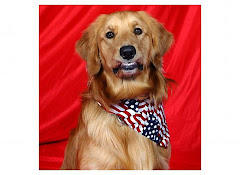A PET OXYGEN MASK SET FOR EVERY FIRE TRUCK CAN SAVE PETS’ LIVES
 I received the following press release from a reader. It was originally posted on the
I received the following press release from a reader. It was originally posted on theBark Buckle Up website.
“Bark 10-4™” Campaign Created to Help Fire Departments Across America
Get Pet Oxygen Masks
Annually, an estimated half million pets are affected by fires in the United States and more than 40,000 pets die each year due to smoke inhalation. With the right equipment, police, fire and emergency medical service (EMS) rescuers can often save a pet's life. Losing a pet in a house fire can be a devastating experience for a family member. Even the best value pet insurance won't help here. SurgiVet® Pet Oxygen Masks are effective with dogs, cats and other companion animals, but only if they are on hand at the scene of an emergency.
Smiths Medical, the US manufacturer of the SurgiVet® brand of animal health products, announced today that it has teamed up with Bark Buckle UP® to launch the “Bark 10-4™” campaign. During October, which is National Fire Safety Month, industry leaders and pet safety experts Bark Buckle UP®, and Pet Safety Lady™ Christina Selter are teaming up with Smiths Medical and fire departments nationwide to launch the “Bark 10-4™” campaign to raise awareness of the need for Pet Oxygen Masks.
Currently, most of the more than 30,000 fire departments and EMS offices nationwide have more than one truck, and funds to purchase Pet Oxygen Masks often fall short.
The “Bark 10-4™” Campaign was created with the goal of getting a Pet Oxygen Mask on board every fire truck in the country by encouraging the public to sponsor the purchase of Pet Oxygen Masks for their local fire departments. A $25 sponsorship ensures that one mask can be purchased for a fire department; a $65 sponsorship buys a mask set, which includes a small, medium and large mask.
Sponsorship can be completed at www.Bark10-4.com or from a link at www.surgivet.com. The sponsor designates the specific fire department to receive the gift, which will be delivered with the shipping/handling costs paid by Smiths Medical.
“Vets have used oxygen masks designed especially for animals for years,” according to Lisa Huston, SurgiVet® Product Manager at Smiths Medical. “These masks have found their way into the hands of first responders primarily through word of mouth and the generosity of compassionate pet owners. This program will go a long way toward raising awareness about a product that can save a lot of pets’ lives.”
“The mask only works if it is on the truck,” states Jose M. Torres, Battalion Chief ‘A’ Platoon Santa Monica (California) Fire Department. “Together we can save pets lives.”
About Bark 10-4™
Bark Buckle UP®, is a nationally recognized innovative leader in pet safety that created the program Bark 10-4™ to assist first responders and the public on pet emergency issues and needs. With tours throughout the USA and Canada, and company volunteers in over 20 cities, Bark Buckle UP® leads the charge for educating and promoting awareness for pet safety. For more media information about the Bark 10-4™ campaign,
visit: www.BARK10-4.com, BarkBuckleUp.com or Petsafetygear.com
About Pet Safety Lady™, Christina Selter
Pet Safety Lady™, Christina Selter works closely with Fire, Police, Coast Guard and EMT personnel who support the pet safety program. She has been featured on television, radio, international auto shows, pet expos, news articles and guest speaking engagements nationwide. For more information about Pet Safety Lady™, visit www.PetSafetyLady.com
About Smiths Medical - SurgiVet®
Smiths Medical designs, manufactures and distributes a line of veterinary-specific medical devices under the SurgiVet® brand. SurgiVet® is a globally recognized brand of products specific to the animal health industry, including a comprehensive range of monitoring devices, anesthesia systems and critical care consumables. Smiths Medical is part of the global technology business Smiths Group.
Read More......













































